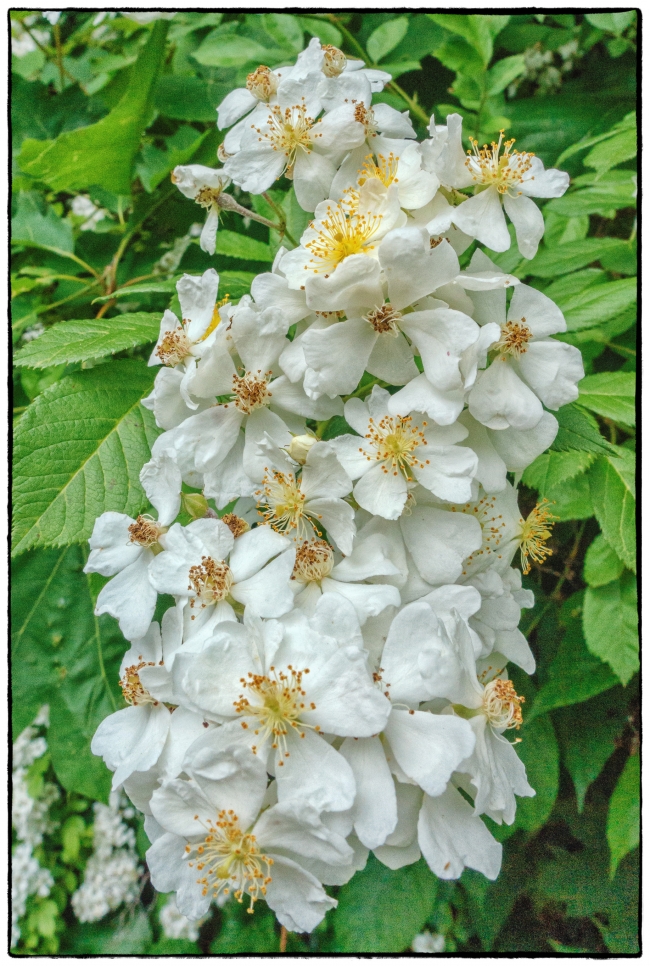We’re still in Spring (barely) and things are blooming around the lake. So it’s time to continue with my series of things encountered while walking the dog.
This is Rosa Multiflora – also known commonly as multiflora rose, baby rose, Japanese rose, many-flowered rose, seven-sisters rose, and Eijitsu rose. It is native to eastern Asia, in China, Japan and Korea.
According to Wikipedia:
It is a scrambling shrub climbing over other plants to a height of 3–5 m, with stout stems with recurved prickles (sometimes absent). The leaves are 5–10 cm long, compound, with 5–9 leaflets and feathered stipules. The flowers are produced in large corymbs, each flower small, 1.5–4 cm diameter, white or pink, borne in early summer. The hips are reddish to purple, 6–8 mm diameter.
Two varieties are accepted by the Flora of China:
Rosa multiflora var. multiflora. Flowers white, 1.5–2 cm diameter.
Rosa multiflora var. cathayensis Rehder & E.H.Wilson. Flowers pink, to 4 cm diameter.
This stuff is growing everywhere so I wasn’t surprised to learn that in North America it’s considered an invasive species.
According to US National Park Service:
Multiflora rose was introduced to the eastern United States in 1866 as rootstock for ornamental roses. Beginning in the 1930s, the U.S. Soil Conservation Service promoted it for use in erosion control and as “living fences” to confine livestock. State conservation departments recommended multiflora rose as cover for wildlife. More recently, it has been planted in highway median strips to serve as crash barriers and reduce automobile headlight glare. Its tenacious growth habit was eventually recognized as a problem on pastures and unplowed lands, where it disrupted cattle grazing, and, more recently, as a pest of natural ecosystems. It is designated a noxious weed in several states, including Iowa, Ohio, New Jersey, Pennsylvania and West Virginia.
It’s a pity because I find it quite attractive.

